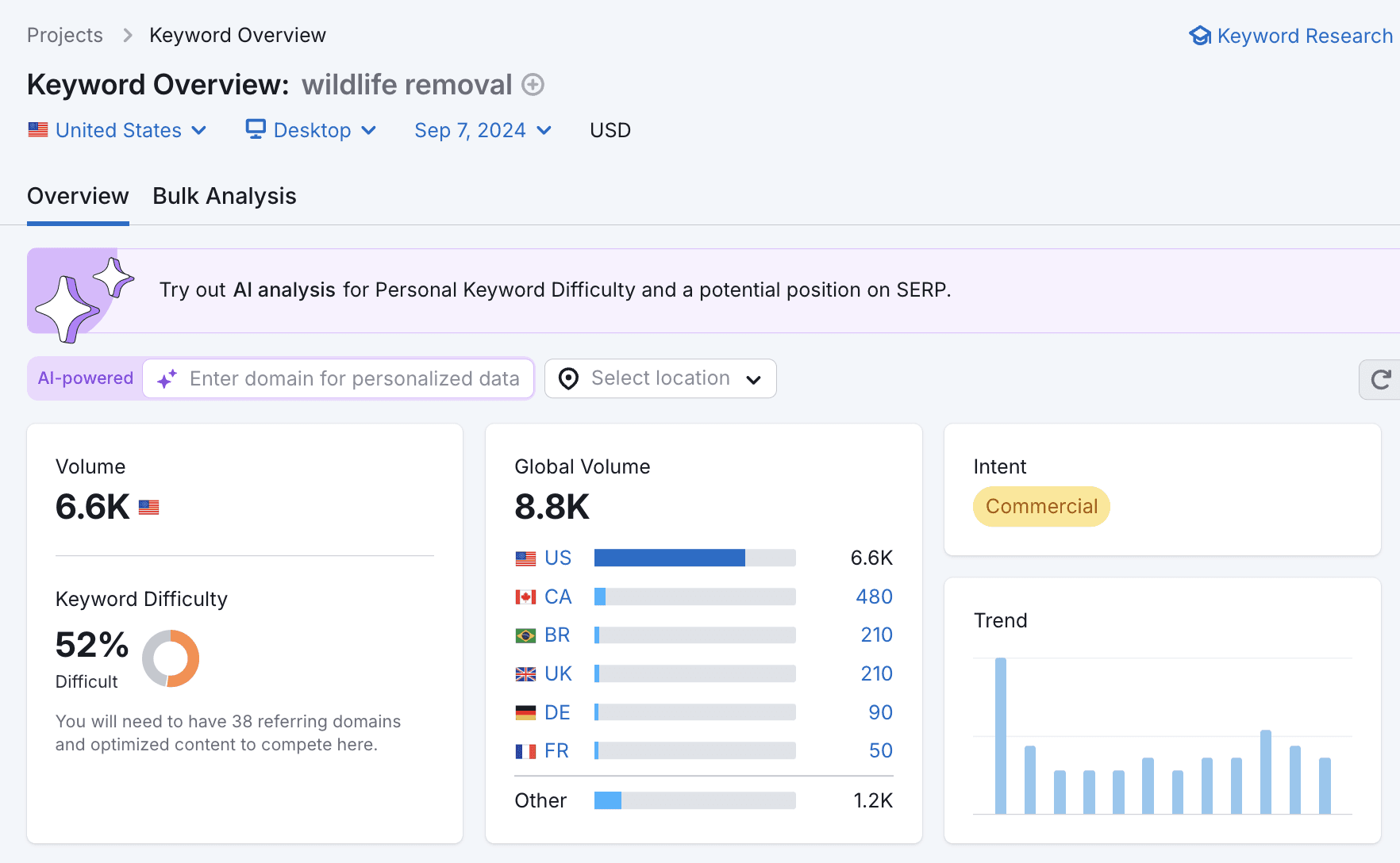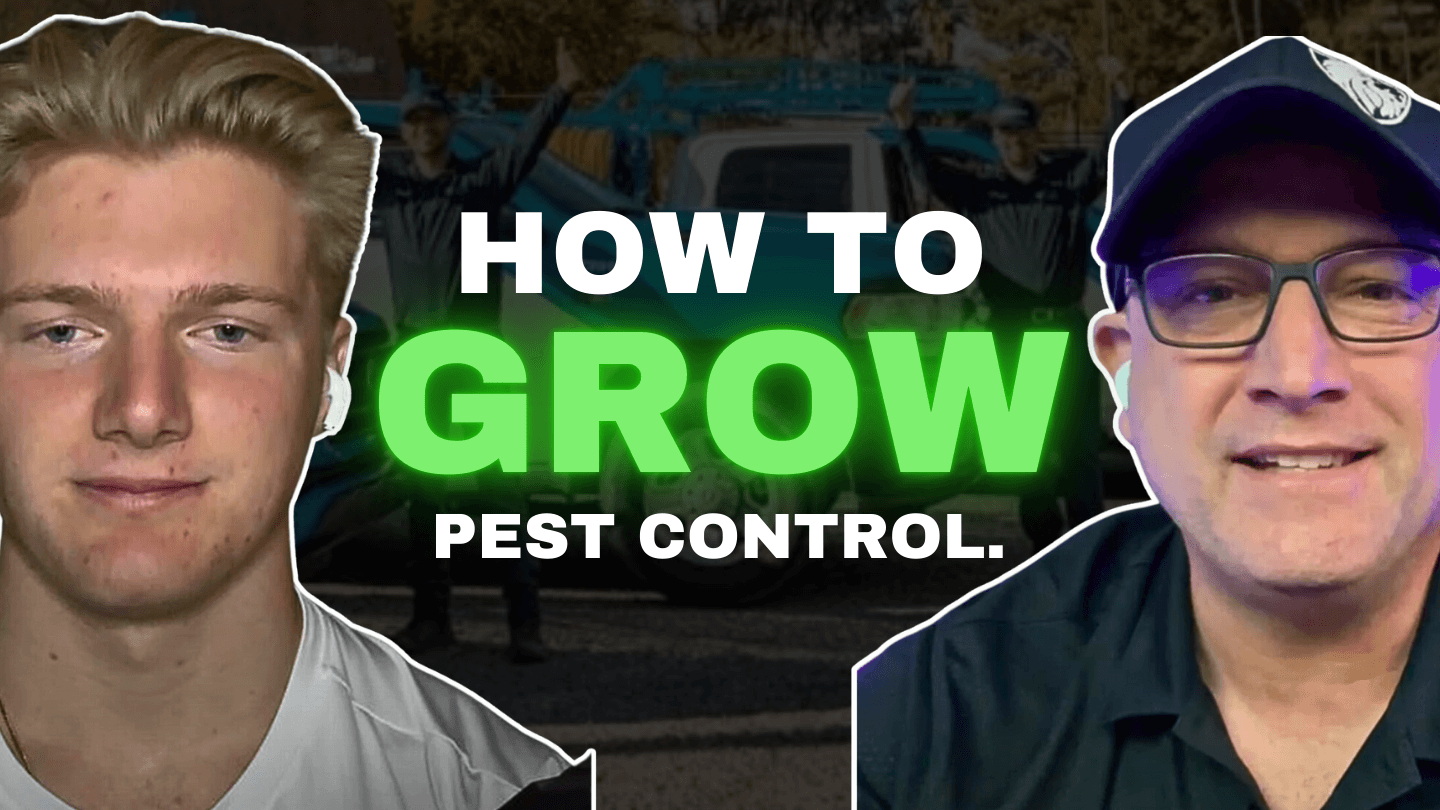Informational
Wildlife Removal SEO: How To Do SEO For Wildlife Removal
Danny Leibrandt
Jun 3, 2024
As someone who has worked with pest control and wildlife removal companies, I’ve seen firsthand how critical SEO is for driving leads in this niche. Wildlife removal businesses often rely on urgent calls from people dealing with invasive animals, and if your website isn’t optimized for search engines, you could be missing out on those crucial clients. In this guide, I’ll break down the key SEO strategies that can help your wildlife removal business rank higher on Google and get more leads.
1. Understanding the Importance of SEO for Wildlife Removal
SEO (Search Engine Optimization) is the process of improving your website’s visibility on search engines like Google. In the wildlife removal industry, this is especially important because people usually need services quickly when they’re dealing with animals like raccoons, bats, or squirrels in their home. The better your SEO, the more likely your business is to appear at the top of search results when customers are looking for help.
Local SEO is Critical: Since wildlife removal is a local service, most of your traffic will come from people in your area. Optimizing your website for local search terms like "wildlife removal near me" or "raccoon removal in [City]" will help you rank higher for location-based searches.
2. Keyword Research for Wildlife Removal SEO
Choosing the right keywords is the foundation of any SEO strategy. When it comes to wildlife removal, you’ll want to target both general and specific keywords that reflect the services you offer.
General Wildlife Removal Keywords:
Wildlife removal near me
Professional wildlife removal services
Animal control in [City]
Emergency wildlife removal
Humane animal removal
Species-Specific Keywords:
Raccoon removal services
How to get rid of bats in the attic
Squirrel removal experts
Snake removal in [City]
Skunk trapping services
Long-Tail Keywords for Niche Searches:
How to get rid of raccoons under the deck
Humane bat removal from attic
Affordable wildlife removal in [City]
What to do if you have squirrels in your walls
Safe methods for removing snakes from yard
3. On-Page SEO for Wildlife Removal Websites
Once you have your target keywords, you need to optimize your website to include them in the right places. Here’s how I do it for my wildlife removal clients:
Title Tags and Meta Descriptions: Make sure each page on your website has a unique title tag and meta description that includes your main keyword. For example, if you’re targeting “raccoon removal in [City],” your title tag could be “Professional Raccoon Removal in [City] | Humane Wildlife Solutions.”
Service Pages for Specific Animals: I always recommend creating separate pages for each type of wildlife removal service you offer. For example, have a page dedicated to raccoon removal, another for bat removal, etc. This helps you rank for more specific keywords and allows you to provide detailed information on each service.
Internal Linking: Link between your service pages and your blog posts to improve SEO. For example, if you have a blog post about “How to Keep Raccoons Out of Your Yard,” link it to your raccoon removal service page.
4. Local SEO Strategies for Wildlife Removal
Local SEO is essential for any wildlife removal company, as your customers are typically searching for services nearby. Here’s how I ensure my clients rank locally:
Google Business Profile: Make sure you claim and fully optimize your Google Business Profile. Include all your services, up-to-date contact information, hours of operation, and high-quality photos. Also, encourage satisfied customers to leave positive reviews, as these can greatly improve your local rankings.
Location Pages: If you serve multiple areas, create dedicated location pages optimized for each city or neighborhood. For example, a page titled “Wildlife Removal in [City]” should include local keywords and details about how you serve that specific area.
NAP Consistency: Your business name, address, and phone number (NAP) should be consistent across all platforms—your website, Google Business Profile, social media, and local directories. This consistency helps Google trust your business and rank you higher in local searches.
5. Content Marketing for Wildlife Removal
Creating valuable, informative content is a great way to rank for long-tail keywords and attract potential customers. Here are some ideas for wildlife removal content:
Blog Posts: Write blog posts answering common questions like “How to Safely Remove Bats from Your Attic” or “What to Do If You Find a Snake in Your Yard.” Make sure these posts are optimized for relevant keywords.
How-To Guides: Provide DIY tips for preventing wildlife from entering homes. For example, a guide titled “How to Wildlife-Proof Your Home” can attract homeowners looking for prevention tips, and they might hire you for a consultation or professional service.
Videos: Create videos showing how your team handles wildlife removal, with a focus on humane and safe practices. Video content is great for engaging potential customers and can help you rank on platforms like YouTube.
6. Backlink Strategies for Wildlife Removal SEO
Backlinks (links from other websites to your site) are important for improving your SEO rankings. Here are a few ways to get quality backlinks for your wildlife removal business:
Local Partnerships: Partner with local home improvement companies, real estate agents, or contractors. Ask them to link to your site when recommending wildlife removal services to their clients.
Guest Blogging: Offer to write guest posts for home improvement or environmental blogs. In return, ask them to link back to your website.
Citations: Get listed on local business directories like Yelp, Angie’s List, and HomeAdvisor. These citations help build authority for your site and improve local SEO.
7. Tracking and Optimizing Your Wildlife Removal SEO
SEO isn’t a one-and-done deal. It’s important to monitor your SEO performance and make adjustments based on the data you collect. Here’s how I track and optimize SEO for my wildlife removal clients:
Google Analytics: This tool helps track website traffic, keyword performance, and visitor behavior. It’s essential for understanding how people find and interact with your site.
Google Search Console: I use this to see which search terms people are using to find the website and to check for any SEO issues that need fixing.
Update Content Regularly: SEO trends and search algorithms change over time, so I make it a point to update content and adjust keywords regularly to ensure my clients maintain their rankings.
Conclusion
If you want to grow your wildlife removal business, investing in SEO is essential. By focusing on the right keywords, optimizing your website for local searches, and creating valuable content, you can improve your visibility on Google and attract more clients. At Pest Control SEO, I’ve helped many businesses in the wildlife removal industry get more leads and grow their customer base through effective SEO strategies. With the right approach, your business can do the same.


